Ghent - Manhattan of the Middle Ages
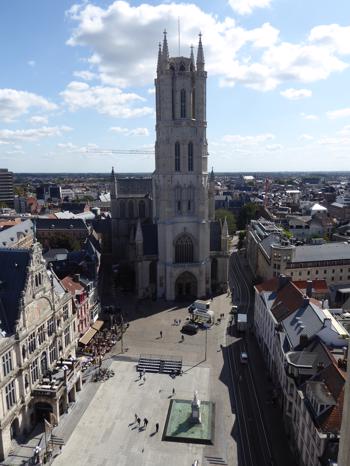
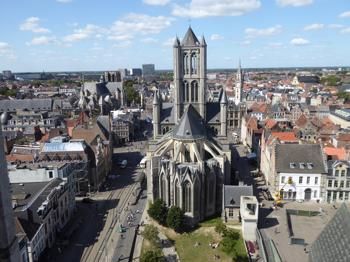
Anne recently featured a post on Van Eyck’s polyptych The Adoration of the Mystic Lamb commonly known as the Ghent Altarpiece in St Bavo’s cathedral, not only is it breathtaking, but said to be the The world's most stolen painting. I had the pleasure of seeing this masterpiece when I visited Ghent during a tour of Belgium in 2019.
Known for its open, rebellious, and innovative attitude, Ghent is one of the most beautifully preserved medieval towns in Europe and often dubbed the ‘Manhattan of the Middle Ages’ as during that time the population was the biggest city in Europe north of the Alps after Paris and bigger than Cologne or Moscow.
The vibrant city boasts more than 1,000 years of history and home to an abundance of gothic towers. While Bruges and Brussels are swamped with tourists, the atmosphere in Ghent is of a student city, along with an extravaganza of artistic masterpieces.
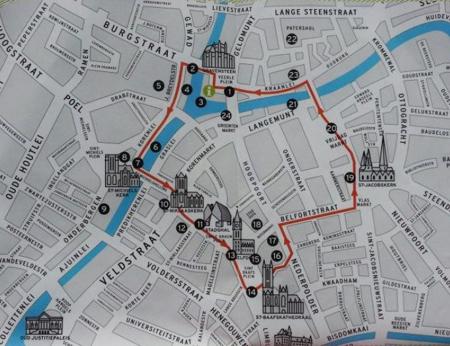
I was transported back to the Middle Ages admiring the views from the top of the Belfry (#13 on the map above). The elevator allowed me to avoid the 300+ steps to reach the top; modernity left behind as every angle showed beautiful gothic buildings and several churches including St Bavo (#14 on the map above) and St Nicholas (#10 on the map above).
The 300-foot-high Belfry is a UNESCO World Heritage Site. Finished in 1380, it was the primary watchtower for the medieval city, and its carillon announced the time and gave warnings.
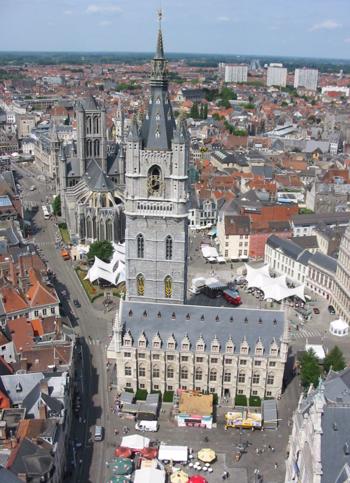
The earliest signs of human settlement in the Ghent area date back to prehistoric times. However, it was only during the Roman period that a community of note began to grow near the confluence of the two rivers Scheldt and Leie. In the Middle Ages, the Abbey of Saint Peter (later the Abbey of Saint Bavo) was founded and a 'portus' created for commercial activity (It is thought that the Flemish name 'Gent' derives from the Celtic 'Ganda', meaning ‘confluence’).
In the 11th and 12th centuries, Ghent became an important trade center thanks to the local production of cloth, made from imported English wool. It was at this time that the city's impressive stone Castle of the Counts (or Gravensteen) was built.2
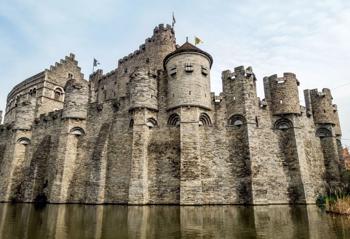
From 1180 until 1353, the castle was the residence of the Counts of Flanders and was heavily intertwined in the political happenings. It was built by Count Philip of Alsace on the site of an earlier fortification. With its battlements and arms, it was meant to show his strength in the face of frequent challenges from the upper class.
After the Counts left, the castle was used as a court and a prison. It ultimately became a cotton mill, gradually falling into disrepair. After an extensive restoration, the Castle of the Counts sports a unique collection of torture equipment and the odd suit of armor, though furnishings are generally sparse.3
During the 1500s Ghent suffered from the continuous religious troubles between Protestants and Catholics. By the late 15th century, the cloth trade had begun to wane, though Ghent remained prosperous by shifting its economy to the shipping trade along the Leie and Scheldt rivers. In the latter part of the century, however, the closing of the Scheldt brought with it commercial decline, a decline not to be reversed until the revival of cloth working during the industrial boom of the 19th century.
In the late 18th Ghent became part of the French Empire when peace and prosperity were restored. From 1800, new factories were constructed such as sugar refineries and cotton mills.
The city continued to grow as an industrial centre throughout the 19th century, and the number of inhabitants tripled. The miserable working and living conditions of the working-class resulted in the creation of the first Belgian trade union in Ghent.
Today, Ghent, which is the capital of the province of East-Flanders, has a population of about 250,000 inhabitants.2
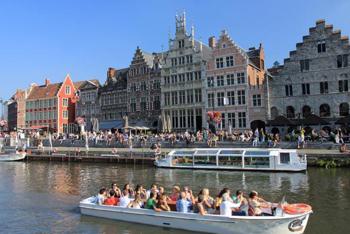
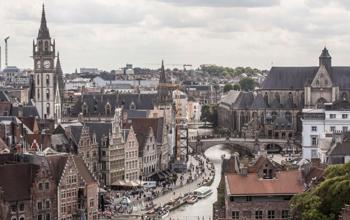
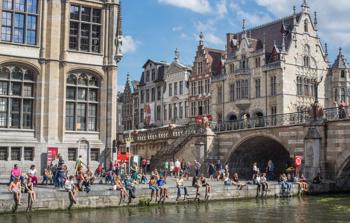
With only a few hours in Ghent it was a joy to cruise along the Lys River and then wander along the quays. Gabled houses, cobbled quays and church spires still dominate the streetscapes of Korenlei (Wheat Market) on the left bank and Graslei (Grass Market) just across the water on the right bank. The high concentration of outdoor cafes made it the perfect spot for a break - the wharf is abuzz with students and families hanging out, legs dangling over the water.
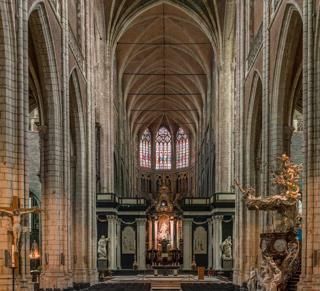
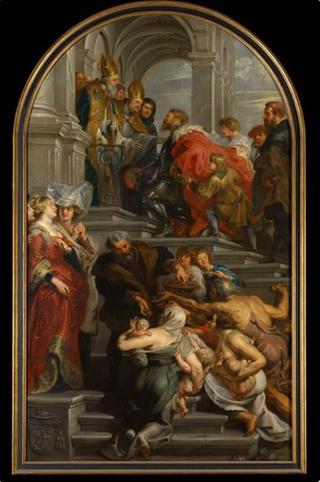
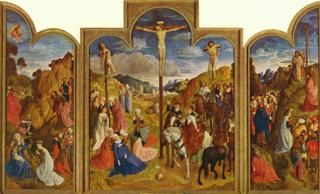
Earlier in the day we visited St Bavo’s to admire not just the Ghent Altarpiece but also the cathedral itself which is filled with art treasures that make many an art-lover’s mouth water.
From the baroque high altar in white, black and red flamed marble, the Rococo pulpit in oak, gilded wood and marble, to a masterpiece by Rubens: Saint Bavo enters the Convent at Ghent, and the Calvary Triptych by Justus van Gent, the Gothic chandelier/sanctuary lamp, the opulent tombs of the Bishops of Ghent – and of course the world-famous Ghent Altarpiece.
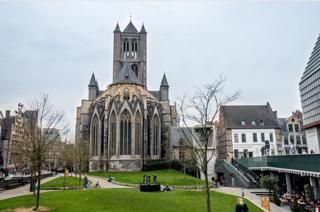
Saint Nicholas Church near the Belfry and Saint Bavo’s, is the third of the three towers that the city is known for. Built at the beginning in the 13th century, it was constructed primarily in the Scheldt Gothic style using bluestone, a striking building with its turrets on either side and a central tower.3
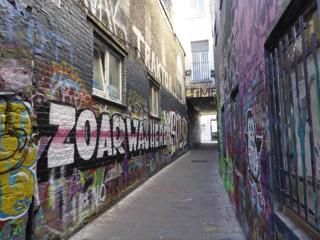

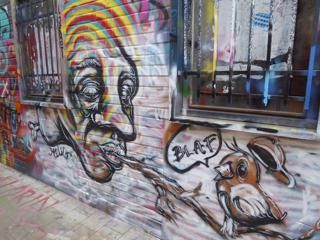
In complete contrast we wandered along Werregarenstraat, now known to most as graffiti alley. Ghent has a vibrant street art culture with large murals by well-known artists dotted around the city as well as smaller works by up-and-comers.
Graffiti alley is a pedestrian street dedicated to street art and is never the same from one week to the next with new tags and designs appearing all the time.
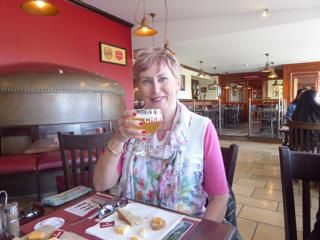
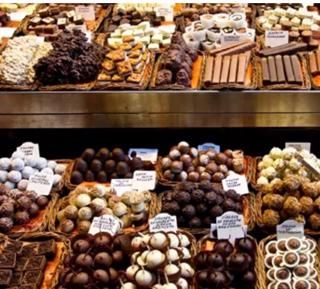
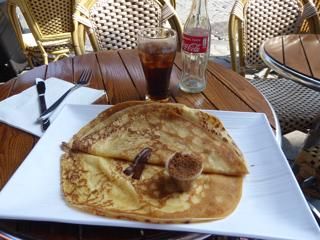

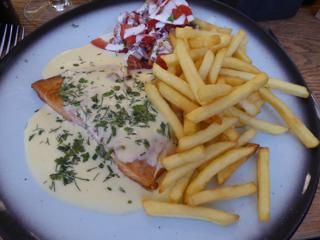
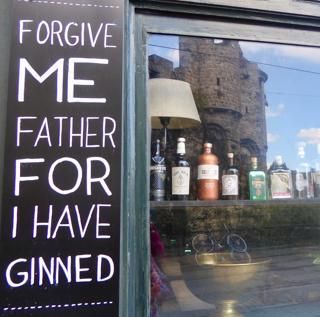
No visit to Ghent or Belgium for that matter would be complete without enjoying Frites (chips), mouth watering crepes, delicious Belgian chocolates and naturally their beers. A popular brand is Delirium with a whopping 8.5% alcohol content – named after the tremors alcoholics can experience – consequently there is a strong chance of seeing pink elephants – even if they are on the label.
With a strong student element locals in Ghent don’t take themselves too seriously and are just as happy enjoying gin.
There is so much to see and do in Ghent, it really is a delightful city.
The following 30 min YouTube video takes you on a walking tour showing off the highlights of the town. There is no commentary so you may find it a little long, in which case scroll along to the parts that interest you. A summary of the sections are:
Introduction
3 mins Inside St Bavo
5 mins The Ghent Alterpiece - with excellent close-ups
7 mins Exit to the square exploring the park and buildings
11 mins Wander past St Nicholas Church
14 mins Cross St Michaels Bridge to view streetscapes of Korenlei and Graslei
26 mins Finish with a look at the Castle of the Counts
Credits
1. commons.wikimedia.org
2. visitflanders.com
3. traveladdicts.net
4. visit.ghent.be
